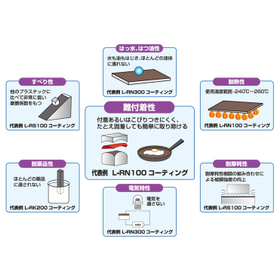We propose suitable coat specifications for your concerns! To improve production efficiency and solve problems.
We would like to introduce our fluororesin coating "Adron Coating."
It is used for coating food machinery, seismic isolation devices that absorb earthquake vibrations smoothly, adhesion to heat welding molds (plates), and preventing stringing, among other applications.
For food utensils and packaging containers, we comply with the positive list system, which only uses substances that have been evaluated for safety. Additionally, the Adron L-R series 'L-RN400' showed an improvement of over 20% in release effect compared to typical coatings in rice cooking tests (reference value).
[Examples of Applications (Excerpt)]
- Cake molds and rice cake making machines
- Noodle dough rolling rolls
- Bread packaging machines
- Seismic isolation device "slip plate"
- Heat welding molds for manufacturing automotive tail lamps
*For more details, please refer to the PDF materials or feel free to contact us.












![[Information] Challenges and Solutions for the Adoption of Mg Alloys <Adron Coat>](https://image.mono.ipros.com/public/product/image/25e/2000771087/IPROS49636365367538828781.png?w=280&h=280)
![[Information] Introduction to Fluororesin Coating <Adron Coat>](https://image.mono.ipros.com/public/product/image/fa7/2000771093/IPROS76585633812604761479.png?w=280&h=280)
![[Information] New Proposal for Improved Fuel Efficiency and Output <Adron Coat>](https://image.mono.ipros.com/public/product/image/b0f/2000771104/IPROS62454371799948165657.png?w=280&h=280)